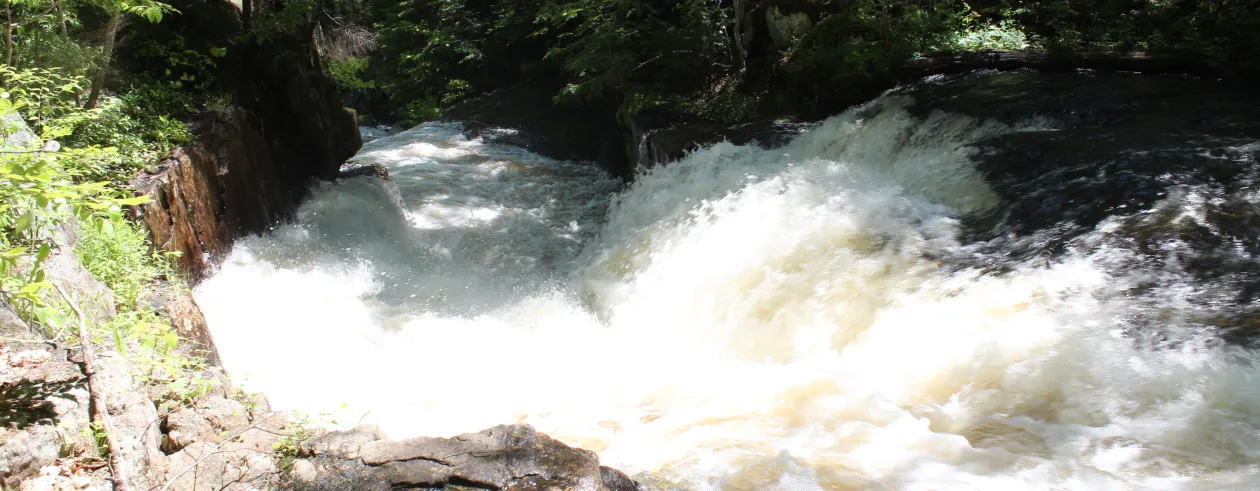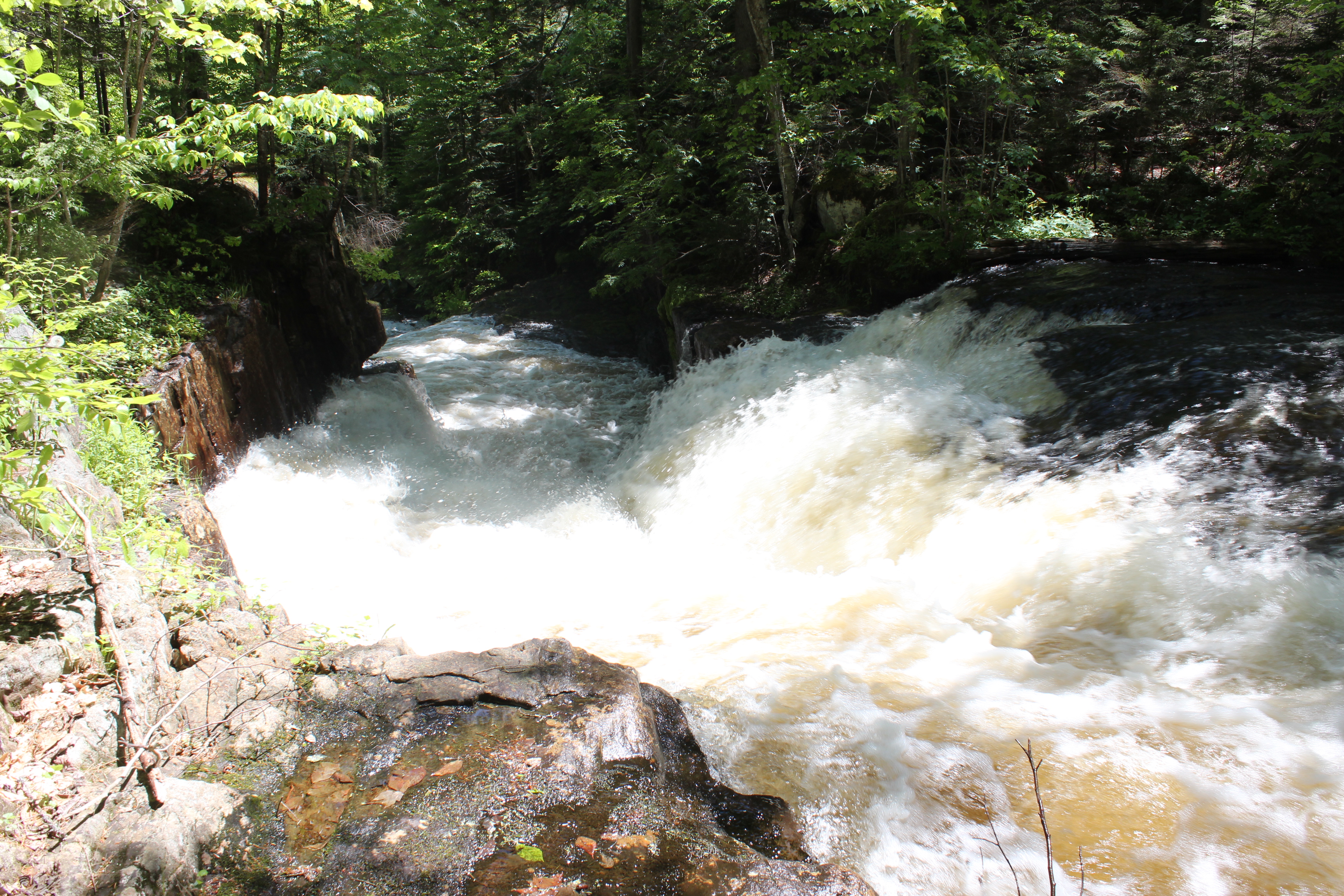
A couple of months ago I went on a whirlwind waterfall tour on the outskirts of Tupper Lake. To my surprise, just beyond the edge of the twisting, tree-lined roads were little-known trails to spectacular places. I discovered raging waterways that squeezed between rock walls, dropped off of river-bottom precipices, and tumbled over enormous boulders.
People pass these gorgeous falls every day without realizing they’re there, making them feel more remote than they are. I recently learned about another local treasure, Pa’s Falls (also known as Winding Falls), and I decided to check that off my list, too.
A little-used trail
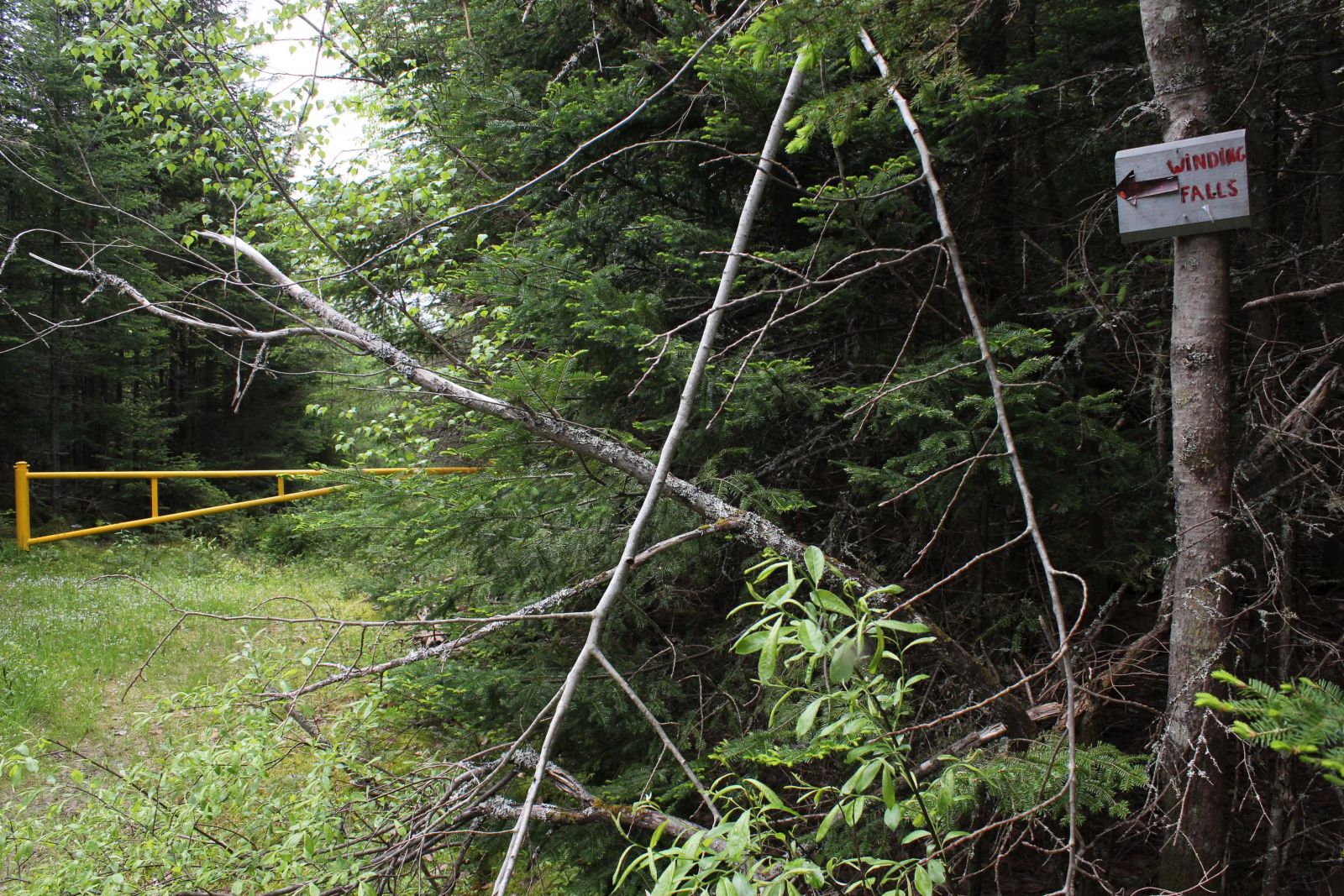
Rumor has it a state Department of Environmental Conservation trail crew will soon start working on a couple of marked trails to the falls, and that’s a good thing — while I had little problem finding my way, I can’t recommend this trail to anyone who’s new to the forest. The path itself is well-worn in spots, but in other places it almost completely vanishes, meaning you need to look for signs of footsteps on the leafy ground to find the way. There is also some flagging along the route, but that’s sporadic. In some places the ribbons are frequent, while in others they’re nonexistent.
If I’ve completely scared you off, consider this a rough preview to a new hiking trail and wait until it’s finished to visit the falls. If you’re not a stranger to following a somewhat vague route through the woods, read on. This is a beautiful, 3 mile roundtrip adventure through a variety of forest types that ends in a dramatic waterfall.
To find the trailhead, take Route 30 from Tupper Lake toward Long Lake and turn right on Route 421. You’ll pass Bog River Falls, then the road makes a hard left (there’s a sign for Horseshoe Lake) and climbs a long, steep hill. About 3 miles after the turn onto 421 there’s a yellow metal gate and a small wooden sign that says “Winding Falls.”
Beyond the yellow gate
I parked on the side of the road, and led my dog Belle around the gate and into the woods. The forest here is thick, with immature balsam firs lining the narrow but obvious path. There was the occasional fallen tree to clamber over, but other than that things were pretty clear until we reached a series of beaver ponds.
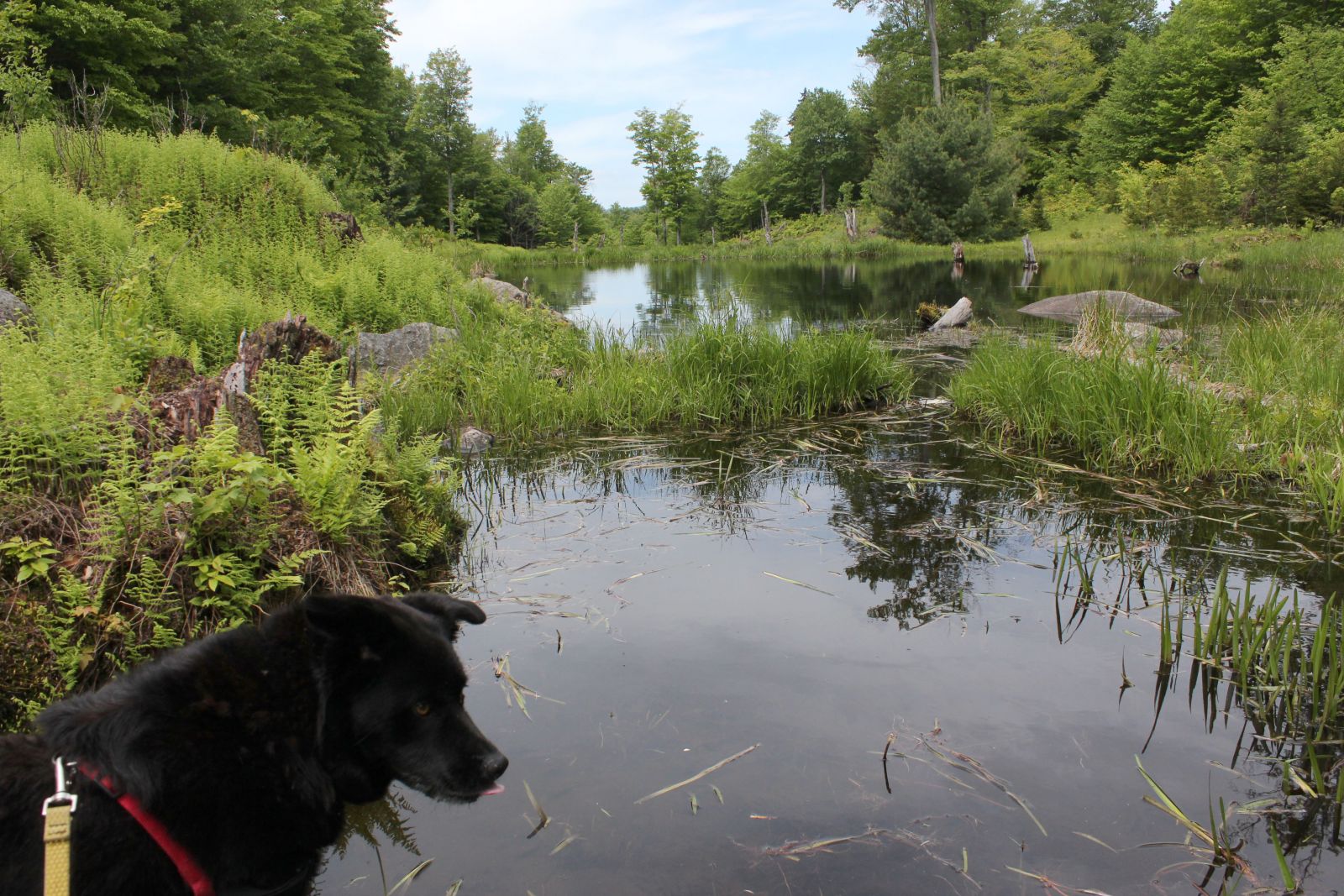
I marveled at this gorgeous place. It’s open and lush, and birds and dragonflies love it. Belle reveled in whatever was on the ground, thrusting all four paws in the air like she just didn't care and grunting in absolute pleasure as she rolled and kicked.
The challenge here is getting past the two small ponds. The trail basically continued straight, but staying on it required a balancing act across an overgrown beaver dam. I could immediately tell this was a surefire way to get wet boots, so we made our way around the upper pond through the thick fern growth.
On the other side of the dam, the path turned into an old woods road as it gently climbed a hill. Through the trees on the left I spotted a much larger beaver dam and pond. The next time I’m there I need to go in for a closer look.
Once the road reached the top of the hill, things got a little trickier. The trail passed through open areas of grass and ferns, and some of them were so overgrown the trail was completely obscured. It took a little searching along the perimeter to figure out where to re-enter the woods.
After that that there was a long, easy-to-follow climb through a predominately yellow birch forest, followed by a steady decline through more birch. The path here was tricky to find, as the thick stand of birch saplings and leafy forest floor made the ill-defined trail hard to see. The flagging began around this spot, so we were able to use that to get an idea of which direction to walk in. That's how the rest of the way went — there were small, grassy openings with muddy sections; thick spruce and balsam stands where the path was obvious; and beautifully open hardwood stands. There were also short climbs and dips, but the terrain was mostly easy — it’s the route finding that can be a chore.
The best advice I can give is to use a combination of tools. Don’t let yourself lose sight of the last ribbon. They occur fairly frequently but some have fallen to the ground. Bring a map and compass and know how to use them. And for me, the best thing was having Belle with me. She’s a natural at following a trail, even if it’s not entirely obvious to me.
Winding Falls
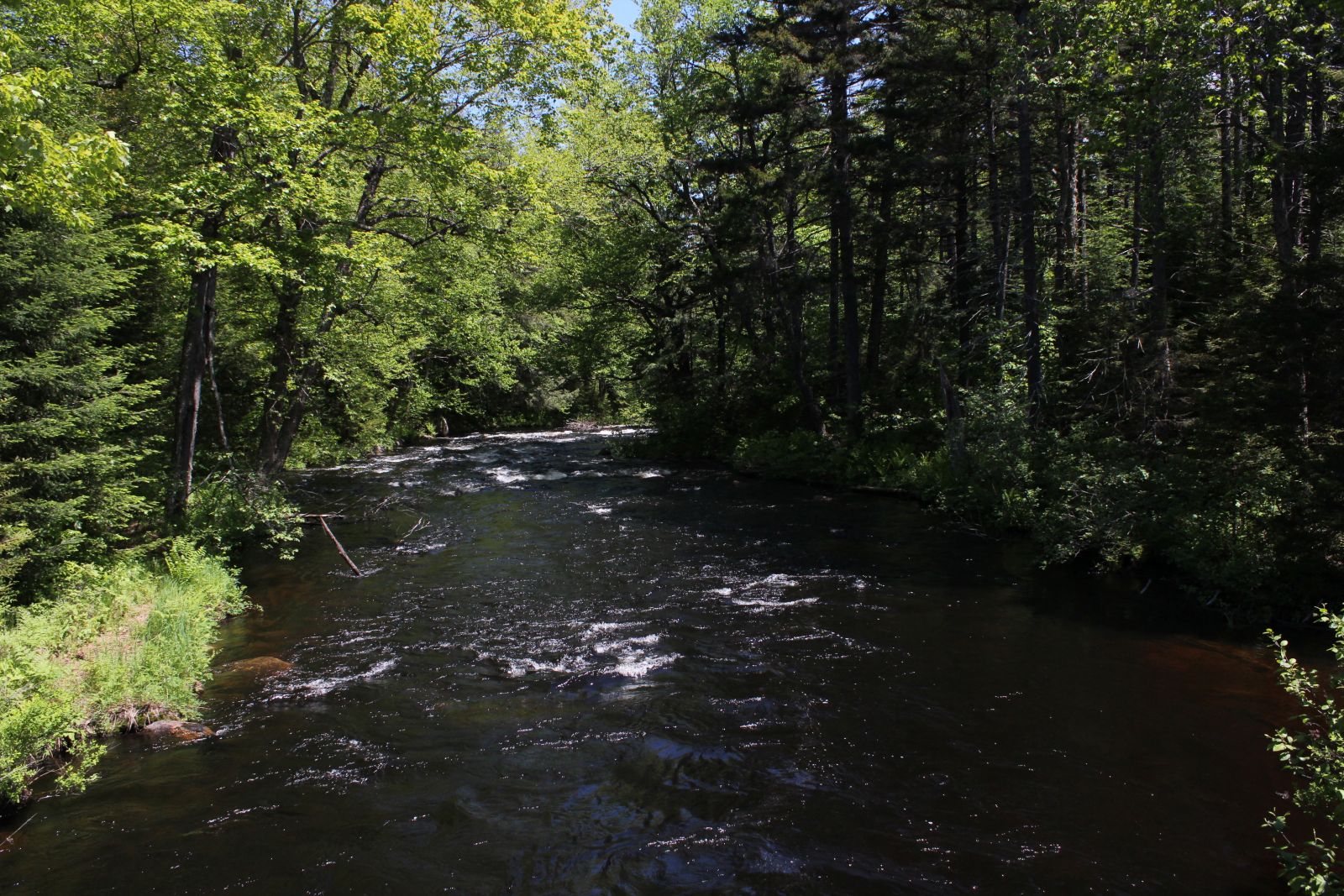
It’s true that getting to Winding Falls is an adventure, but it’s worth it. The forest here is full of birds and signs of other animals. We scared several ruffed grouse along the way, and even saw a handful of fluffy grouse chicks.
But the real treasure, of course, is the falls. Belle and I entered a clearing and saw the Bog River rapidly flowing beneath the old railroad trestle in front of us. The roar coming from downstream was obvious. We turned left, followed the riverbank, and there it was — a frothing white torrent of river. Next to the cascade there are a couple of grave markers; a memorial, I assume, to someone’s Pa. Just past them is a narrow promontory that reveals more of the falls. The water shoots through a narrow canyon before splashing into a calm bend in the river below.
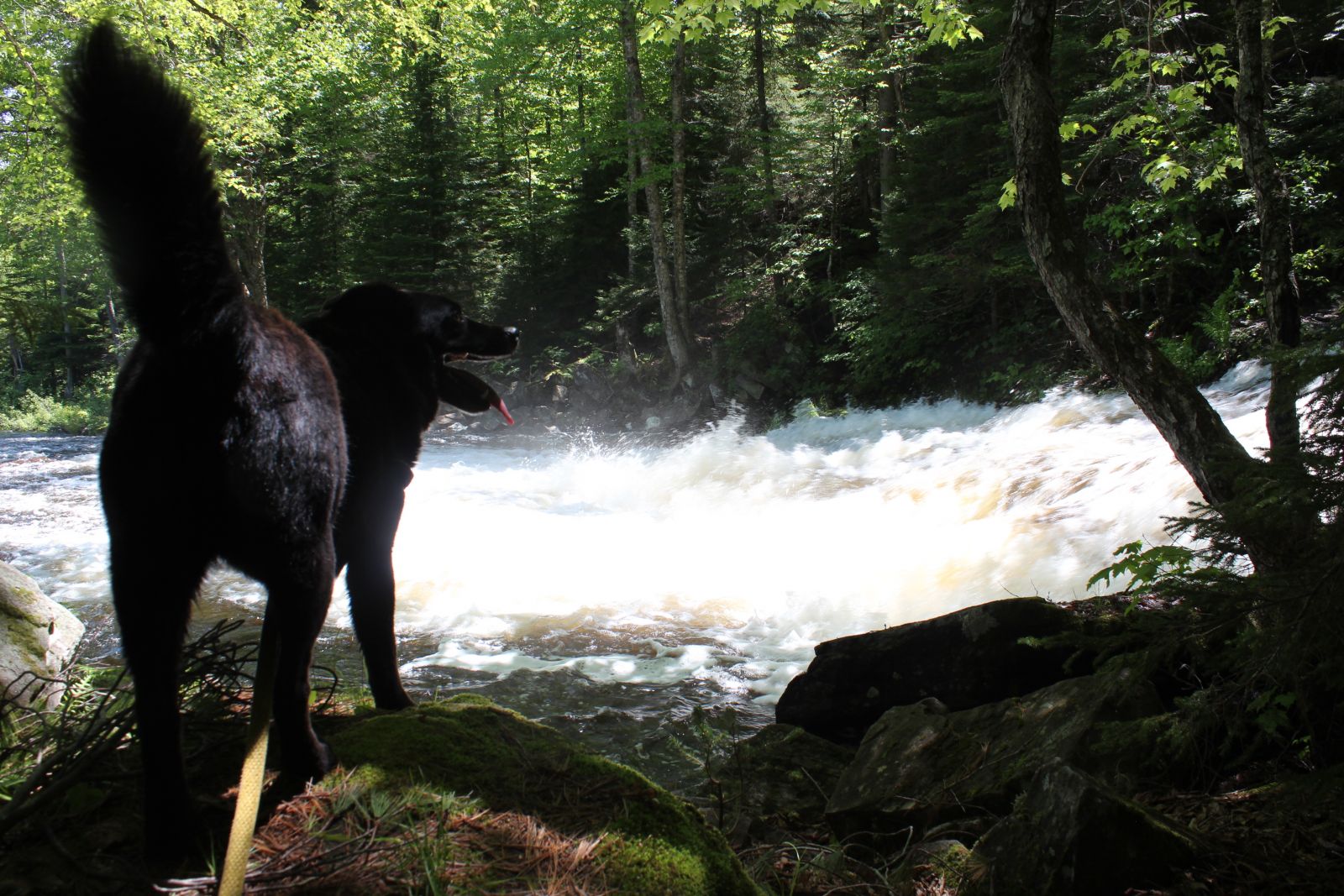
Belle and I took a moment to read the grave markers and contemplate the impermanence of life — well, I read the markers while Belle snapped at flies — then we made our way to the base of the falls. Belle pulled a stick from the ground and proceeded to chew on it while I watched an Eastern tiger swallowtail butterfly dance in the cold mist. It was a nice dynamic, the roar of water and the gentle insect, but soon the creature drifted down the Bog River and was out of sight. With a smile and a sigh I turned from the spectacular scene and was soon out of sight, too.
Why stop with one waterfall? Take the Cranberry Lake Waterfall Tour, then hop into town to for a cold local brew and dinner!
This week in related ADK news:
